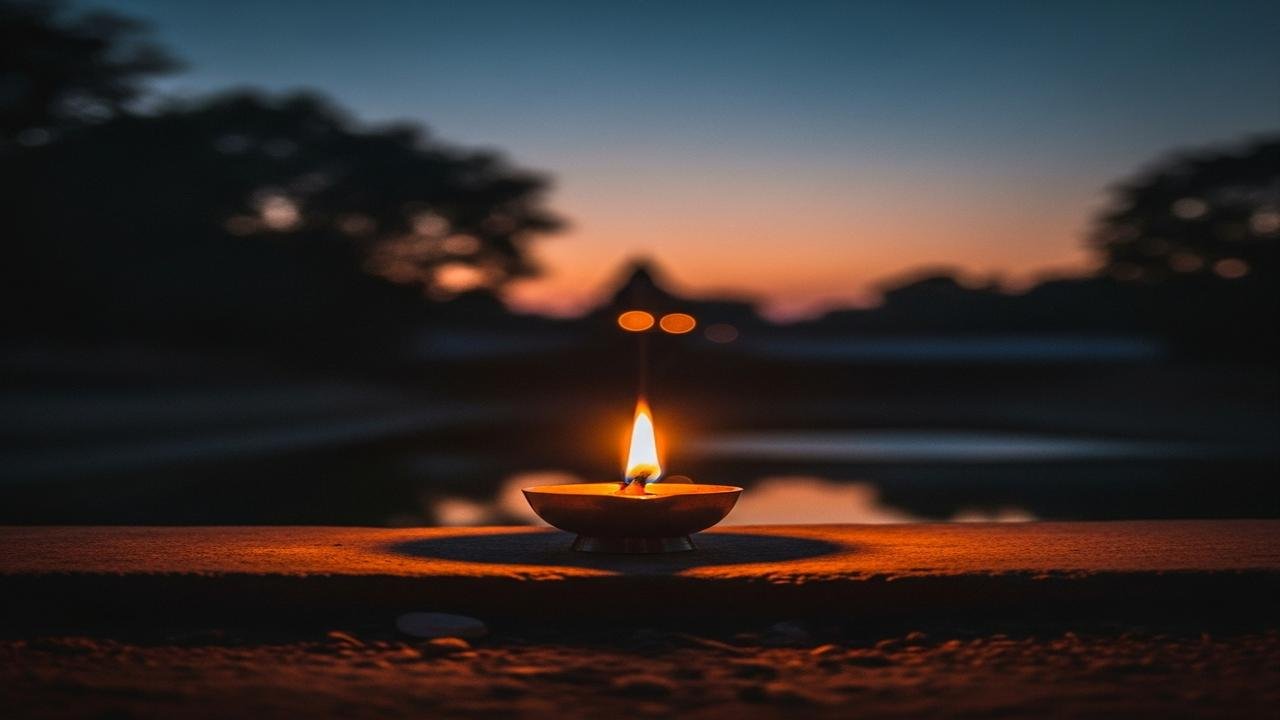The Secret Power of Lighting a Diya at Dusk

The Quiet Light: The Significance of Lighting a Diya at Dusk
As the sun slides behind distant roofs and shadows begin to soften, a small ritual often brings homes to life. I remember my grandmother carefully setting a clay diya on the windowsill, filling it with ghee, and lighting the cotton wick. The flame trembled for a moment, then steadied like a heartbeat. That tiny light seemed to hold the whole evening—comfort, prayer, and a sense of being watched over.
Lighting a diya at dusk is more than habit; it is a tradition woven from history, symbolism, and daily devotion. At its heart lies a simple truth: light calms the mind. In Hindu practice, dusk is a sacred time—sandhyā, a threshold between day and night. This liminal hour asks for attention. Lighting a diya acknowledges that change and invites clarity.
Symbolism is gentle but deep. The diya stands for jñāna—knowledge—pushing back tamas, the darkness of ignorance. The flame is also a living image of the divine presence. In many homes people whisper a short prayer when the flame is lit: an offering of gratitude, a humble request, or a remembrance of ancestors. The diya becomes a link between the visible world and the unseen.
Historically, lamps have burned in Indian rituals for thousands of years. Vedic yajñas used fire as a medium to reach the gods. Over time, the simple household oil lamp carried that same sacred role into everyday life. Temples still keep deepas (lamps) lit near murtis (icons), showing reverence and inviting blessings. Festivals like Diwali magnify this practice so whole streets glow with lamps, but the evening diya, lit in quiet homes each day, is equally profound.
There are practical and subtle reasons why dusk is chosen. The human mind naturally slows as daylight fades. Lighting a lamp provides orientation—literally and spiritually—inside the home. It marks a pause from work, a moment to center the family. The warm light soothes children, comforts elders, and often becomes the backdrop for simple evening prayers or storytelling.
Culturally, the placement and care of the diya carry meaning. A lamp placed near the threshold blesses the entrance, inviting auspiciousness into the house. Lamps in the prayer corner sustain devotion and act as a reminder to live with awareness. Using pure substances like ghee or sesame oil traditionally symbolizes inner purity and sincere offering.
Even today, lighting a diya at dusk connects people across generations. Urban apartments and village courtyards share the same ritual. For many, it is a bridge between modern life and timeless values—gratitude, humility, and the practice of turning inward when the world quiets. It is a small, daily discipline that cultivates presence and calm.
There are also gentle adaptations people choose. Some use eco-friendly oils or brass lamps to reduce smoke and waste. Others light a candle or an electric deepam while keeping the intention the same: to honor light, to welcome peace, and to remember what truly matters.
Simple practices to try this evening:
- Choose a quiet spot and place a small diya on a stable surface.
- Offer a short inward prayer or a single breath of gratitude before lighting.
- Watch the flame for a minute, letting thoughts settle without forcing them.
- Make the light your signal to pause—close the day gently.
Conclusion: Lighting a diya at dusk is an invitation—an invitation to slow down, to bring light into ordinary moments, and to remember that even a small flame can hold deep meaning. Tonight, when you light a lamp, let it remind you of inner clarity and the warmth of shared traditions.
